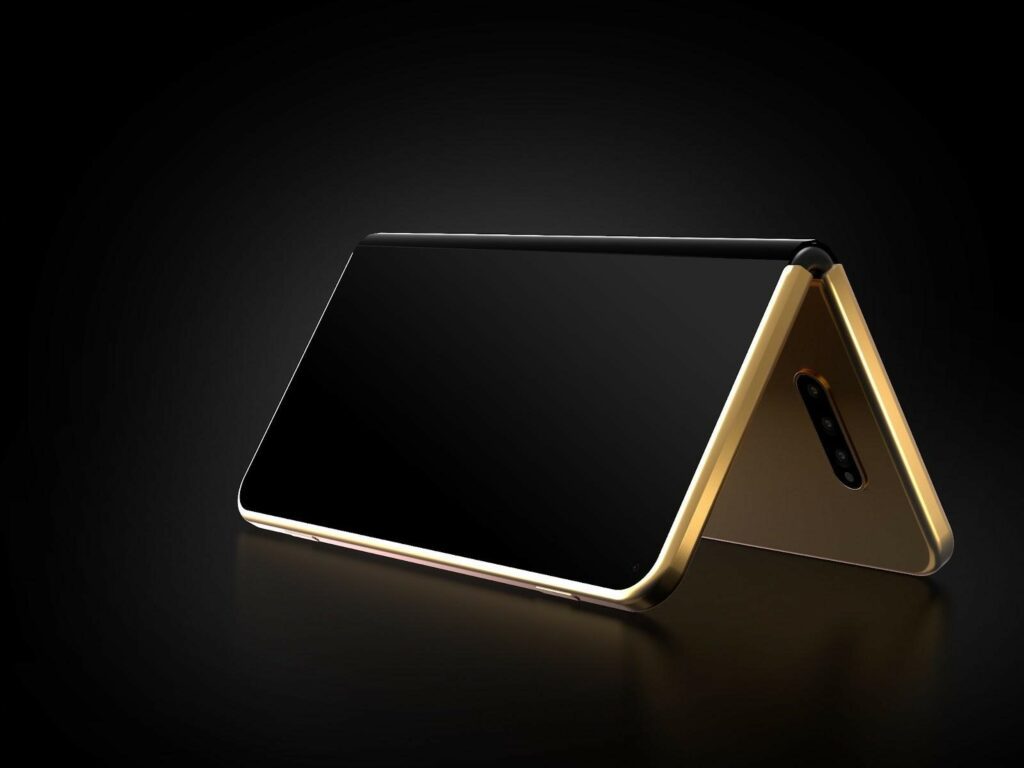
IMAGE SOURCE: Depositphotos.com
Ever since the iPhone 6 was launched in September 2014, big phones have been the in thing. Every year, smartphone manufacturers have been making their new releases bigger, and bigger, and bigger.
But this has created a bit of a problem. While people want their phones to be big, they can only get so much bigger before they become impossible to fit in our pockets.
Cue the foldable. While the concept of a one-screen foldable phone has been around for a while, it wasn’t until Samsung released the Samsung Galaxy Fold in 2019 that foldable phones hit the mainstream. This was a phone that could fold down into a 4.6-inch display when folded, and then fold open into a 7.3-inch display when unfolded.
A game changer, for sure, but not as much of a game changer that Samsung were hoping for. Especially with the “rollable” phone supposedly just around the corner. But more on that later.
The New Era Of Phones
To understand why the foldable era hasn’t quite stuck, it’s important to understand one of the biggest reasons why people want big phones. According to recent statistics, 93% of millennials between the ages of 23 and 28 own smartphones – which is the highest bracket of smartphone usage compared to any other generation.
Similarly, the mobile gaming industry is set to generate $100 billion by the end of 2023 – with the online casino industry alone worth around $63 billion. The majority of these players fit between the ages of 20 to 30, so considering both statistics, it becomes easy to understand why most smartphone marketing campaigns utilise gaming as a key USP.
To get the full benefits of hundreds of mobile video games, or the thousands of real money mobile slots that can be accessed on a smartphone, people require a bigger, more accessible screen. Mobiles have essentially become gaming devices. But foldables are not good ones.
The Crease, Oh, The Crease
For starters, foldable phones have limited app and software optimisation, which makes it harder for players to interact with them. They are also more fragile and less durable – especially when it comes to their intricate folding mechanisms.
Considering that smartphone users – gaming or otherwise – use their phones everyday, this is seen to be too big a risk, especially when considering the higher price point of most foldable phones on the market.
The crease does the most damage, however. When it comes to mobile video games, the graphics, themes, and immersive qualities are what makes them so popular. All three of these traits are hampered by the noticeable crease that still exists even in the latest foldable models. After so many years of Gorilla glass making our phone screens almost impervious to damage (though not totally immune), how can we be expected to lapse back into quiet ‘okayness’ with the fact that a $1,000+ model has a wear line running straight across the middle?
The answer for many people is simple: we can’t. It may seem like a relatively small bugbear in the grand scheme of things, but, then again, it’s really not. Whether or not it’s liveable with is down to the consumer, and that draws a line through any manufacturer’s demographic.
While manufacturers have done their best to keep its noticeability to a minimum, under certain lighting, it still remains, and the ease of dust accumulation in foldables requires an individual cleaning the crease and the entire inner-screen nearly every time it is opened.
Are Rollables The Answer To Foldables?
So what’s the answer? Well, that’s where rollable phones come into the conversation. A number of companies are reportedly working on making rollable phones a reality, effectively banishing the foldable concept from existence. These are concept handsets with a display that wraps around the bottom of the phone, with the ability to extend outwards when prompted.
What does this achieve? Well, no crease for one thing. But they also get rid of the possibility for dust damage, the heaviness and fragility of the hinge, amongst other key downfalls of the fold – including the narrow, function-only outer screen.
But is a rollable phone really feasible? As a competitor to the foldable phone, you would have to say yes. If these were to come onto the market today, then the foldable phone would undoubtedly be blown out of the water. That’s because they offer the same thing, but in a different way. The foldable method has issues. The rollable method, albeit in the concept stage, doesn’t.
Phone manufacturers are throwing money at this concept, so we can only assume it’s possible – despite the fact that it sounds like an april fool’s joke.
But as we just mentioned, it is in the concept stage. It could be years before a usable, consumer product is ever launched. Until then, smartphone manufacturers will have to either jump ship to the rollable concept or stay focused on improving the foldable experience.

Leave a Reply